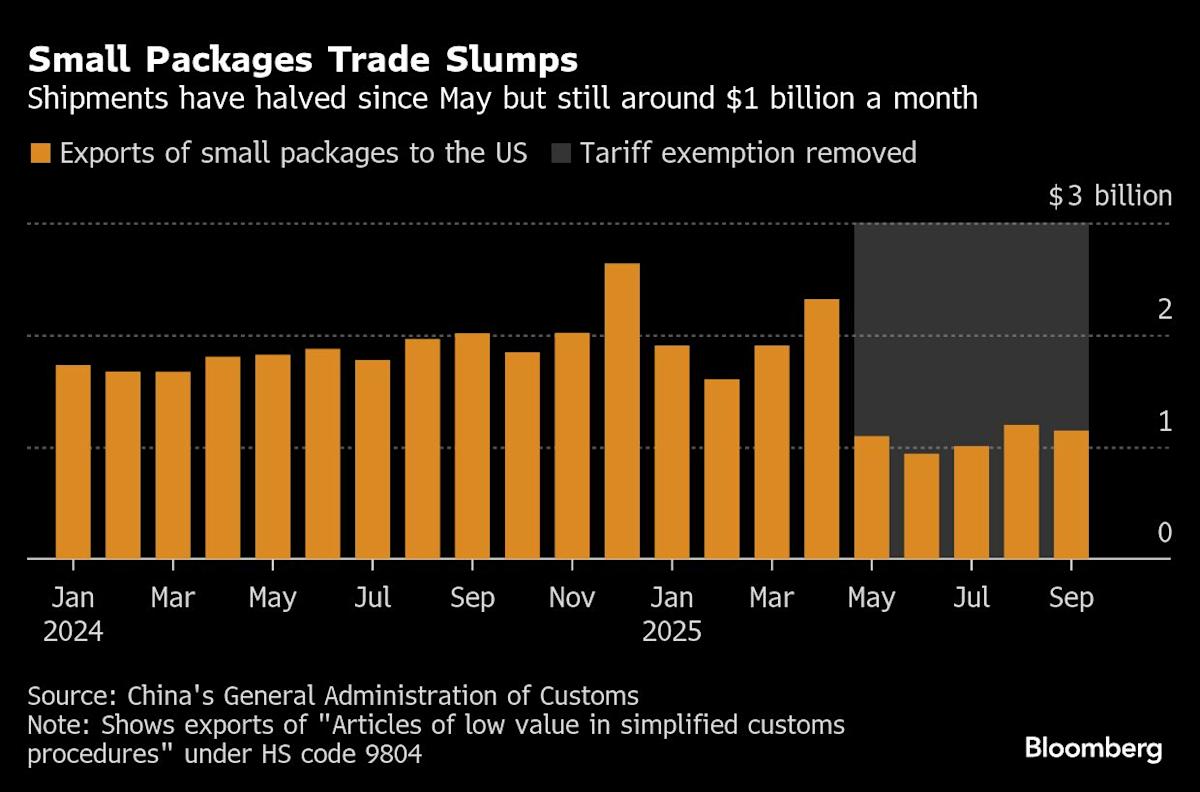
Resistance in US-China Trade: New Dynamics


Donald Trump's trade war has shown its resilience after six months, demonstrating how vital many products are to the U.S. economy. Despite the U.S.'s 55% tariff rates, approximately one billion dollars worth of products cross the Pacific Ocean daily to reach the U.S..
While there have been double-digit declines in overall trade value over the past six months, some products have entered 2024 with increased demand, challenging the trade tensions between Beijing and Washington.
Bloomberg economists Chang Shu and David Qu state, “China's strong position in global supply chains allows U.S. importers to have some bargaining power in the short term. It won't be easy for other countries to take China's place, and restructuring production will take time.”
These developments give President Xi Jinping more bargaining power before negotiations to extend the 90-day customs agreement that concludes in November. In the third quarter, over 100 billion dollars worth of Chinese goods came to the U.S., which should strengthen Beijing's economic growth target and has increased the bilateral trade surplus to 67 billion dollars.
Trump predicted on Tuesday that the upcoming meeting with his Chinese counterpart would end with a "good deal" regarding trade but warned that the discussions might still derail during the summit's Korean portion. The U.S. leader listed rare earths, fentanyl, and soybeans as the crucial trade issues for both parties.
The relationship between the world's two largest economies is not only confined to products controlled by China; it also includes products critical for American manufacturing, such as magnets or chemicals used in widely used medications. Although the values of most of the top 10 products exported from China to the U.S. decreased in the last quarter, it is noted in a Bloomberg analysis that shipments of electronic cigarettes have increased.
Additionally, Chinese companies exported over 500 million dollars worth of e-bikes in the three months leading up to September, showing a slight increase compared to the same period last year. Over the last three months, exports of refined copper cathodes rose from nearly zero to 270 million dollars, and electrical cables reached 405 million dollars, up 87%.
Zhaopeng Xing, a senior China strategist at Australia and New Zealand Bank, said, “Both sides can reduce interdependence, but it cannot be brought to zero.” They believe that Trump's tariffs enabled some trades by reducing costs.
ANZ's Xing notes that U.S. importers are paying lower taxes by declaring the customs value of goods based on the first sale in a third country and raising prices when the goods reach U.S. ports. Routing through Mexico or Vietnam allows some firms to avoid paying full tariffs. Xing states, “There are many loopholes,” adding that U.S. Customs may not have enough manpower to address these issues.
During the July-September quarter, China sent around 8 billion dollars worth of smartphones, laptops, tablets, and computer parts to the U.S.. While this figure is less than half of last year’s same period total, it still represents significant purchasing power given the high tariffs. U.S. consumers continue to buy billions of dollars worth of small packages from e-commerce platforms like Shein Group Ltd. and PDD Holdings Inc.'s Temu, but even though these shipments face a 54% tariff, according to Chinese data, nearly 5.4 billion dollars worth of small packages were sent to the U.S. after Trump's administration implemented new regulations in May of this year.
Despite all this, it seems that a contraction process has begun in Chinese and U.S. trade, as Trump aims to revitalize manufacturing in the U.S. while being determined not to leave some critical industries overseas. Currently, shipments from China have fallen to less than 320 billion dollars this year, comparable to levels before the first trade war in 2017.
The collapse in console exports has led companies like Nintendo Co. and Microsoft Corp. to prefer shipping products from Vietnam and other countries to avoid high customs payments. U.S. consumers are now sourcing televisions from elsewhere, causing the value of LCD sets shipped from China to the U.S. to drop by 73% in this quarter.
In other products, such as commercial vessels, U.S. manufacturers had already begun taking a separate route before Trump's tariffs were implemented. However, the damage seen in China-U.S. trade this year has reportedly reached a worse level than during Trump's first presidential term, according to the International Monetary Fund (IMF).
“The bilateral trade separation between the U.S. and China is occurring more rapidly compared to the tariff shocks of 2018-19,” it is stated.
.png)
Yakında Tüm Platformlarda
Sizlere kesintisiz haber ve analizi en hızlı şekilde ulaştırmak için. Yakında tüm platformlarda...






.png)